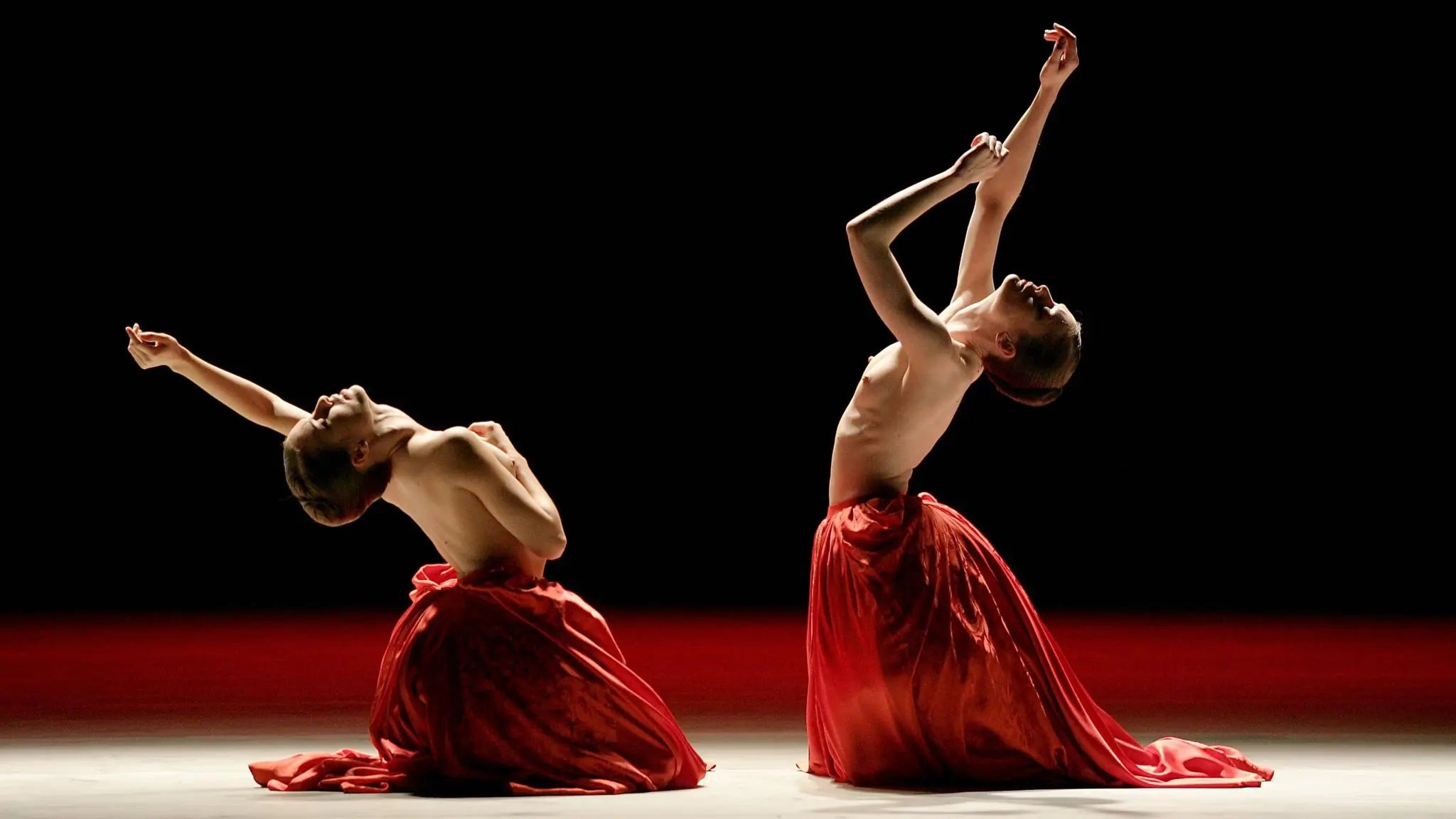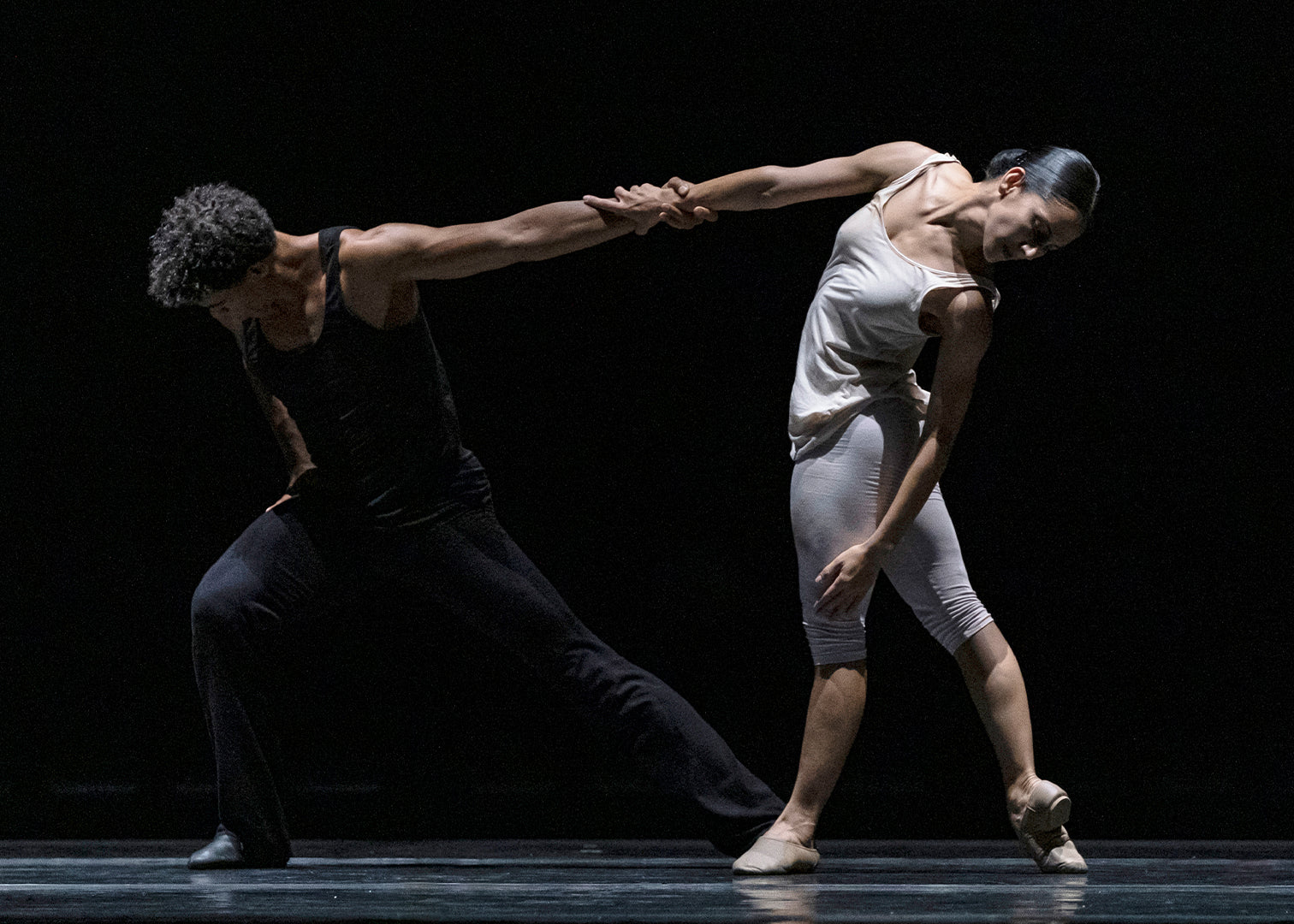For nearly 20 years, Dupont ruled over the Paris Opera Ballet as a classical ballerina (typically French-cold) and a modern-oriented dancer (hungry for innovative works). Pierre Lacotte is in awe of her classical refinement. Pina Bausch was moved by her inner insecurity. Hers is a timeless personality. Perhaps she embodies the 21st-century Parisienne; fashionable elegance coexisting with an assumed laid-back attitude. It's is likely that she will infuse the company with tastes that helped to her forge her artistry. She often says that Pina Bausch’s bitter choreography brought her to life as an artist. “I loved and hated it at the same time,” she recalls as she mentions the first time she saw “The Rite of Spring.” It was a real punch in the guts. And it's certainly how she wants to reach her dancers and the audience. The very first evening she programmed proved to be in line with her personal views on what a modern repertoire should be; vibrant and iconoclastic yet referring to classical technique. The all-Kylián evening deeply contrasts with Benjamin Millepied's naive and light-hearted choreography. Sophisticated, raw dancing runs through all three dramatic, non-narrative, works presented that night. There's a definite note of Eastern European flair in the air...
Loose crimson red skirts floating in subdued light and bare torso are “Bella Figura’s” best signature. Its aesthetic ranges from ancient baroque to modern minimalism. The ballet explores tensions between intimacy and exposition, two opposite facets of an artist’s life. Now that social networks have become increasingly popular among the new generation of dancers, private and public lives are even more closely intertwined, casting a new light on “Bella Figura.” The title derives from the eponym Italian idiom, which means maintaining a good public image in society, regardless of strong emotions that plague us from within. Such theme must be very dear to Jiří Kylián, who spent his formative years under a communist regime. It's no wonder why he's so obsessed with individual freedom; his works are advocating for mental release. The physical pain it takes to achieve such goal translates into choreographic spasms, in a heavy dialogue between movement and sound.
In “Bella Figura,” dancers are naked in every way. Bodies are sensuous and sinewy, torn by contorted movements. One second it's primitive, the next one it's sophisticated. POB dancers sometimes struggle to let go on stage. Their training is all about refinement.
Alice Renavand opened the liturgy with a first martyr's faith. An étoile sanctified by Brigitte Lefèvre, she doesn't dance pretty at all. In other words, she's clearly at odds with the rest of the classical-looking company. In one of the opening tableaux, she's devoured by a black velvet curtain, striking a pose that is glamorous and painful at the same time.
Another standout was Laetitia Pujol, showing her habitual depth, both in motion and expression. Every gesture is filled with a powerful intention; every feature of her face conveys an emotion.
Apart from leading étoiles of the Brigitte Lefèvre generation, Sébastien Bertaud, a soloist in his mid-thirties proved once again an inspired artist, with a strong grip on his character.
What strikes the most in “Bella Figura” is the religious atmosphere that overwhelms the stage. The baroque score evokes the lost splendor of centuries-old churches while flaming torches bathe the audience in ancient rites. Kylián addresses the core of our civilization.
The beautiful harmony of the last scene is lost as “Tar and Feathers” settles down. The piece—new to the repertoire—provides a wide display of existential angst, bringing an even more intellectual tone to the evening. The fiercest piece of all three, it verges on the absurd with nerve-shredding experimental inflections.
“Tar and Feathers” explores vast areas of irrational and unconscious forces within the human psyche. “My work is a metaphor for the ‘unbearable lightness’ and the ‘unbearable weight’ of our being on our tiny planet,” Kylián says on his website. Would it be an ode to his compatriot Milan Kundera, famous for The Unbearable lightness of Being? The choreographer openly alludes to Samuel Beckett. “Our life very often resembles a person with a ‘lead weight’ chained to his ankle, and yet holding a flying ‘balloon’ in his hand, soon to be torn apart by the two contrasting forces.” Dorothée Gilbert embodies the paradoxical nature of a ballet dancer; she looks as light as a feather but her inner strength grounds her as a ballerina.
The scenography is close to surrealism. Mounted on giant stilts, the piano evokes a spider-like Louise Bourgeois sculpture. A large cloud made of bubble wrap stands on the floor like a sunken dream.
The triple bill programme ends on a higher note with “Symphony of Psalms,” which should be praised for bringing a sense of harmony back to the stage. Its evocative references to folk dances and repetitive Latin patterns “laudate, laudate, laudate” create an interesting artistic weave. Persian carpets and prie-dieu in the background provide a disturbing setting to Stravinsky's score. It is Russia made visible; the East meets the West. Dressed with pastel tunics, women march bowing down to the grandeur of an invisible force while men stand in stern attitude, accepting their fate. A miracle arises with Marie-Agnès Gillot—an imposing étoile—and Hugo Marchand—a blooming talent—'s partnering. Theirs is an unrivaled dark beauty, magnified by a strong sense of drama. They nurture and strengthen the promises of a beautiful dawn in the company.









comments